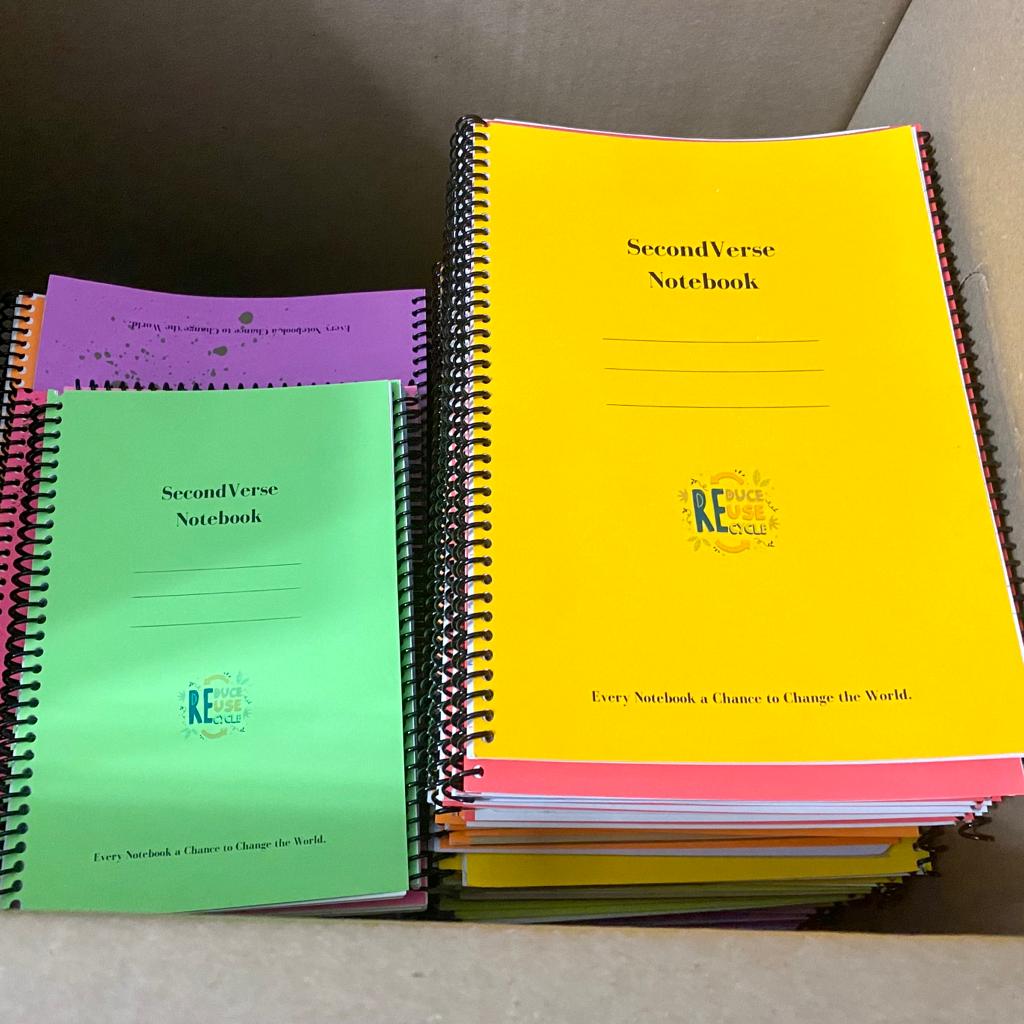How It Works
Amidst the hustle and bustle of the city, a green revolution quietly brews. Moving boxes from Home Depot dubbed as donation boxes dot the corners of gyms, Pizzerias, coffee shops (Starbucks), and libraries. A sign reads, “Donate Your Used Notebooks!” The campaign: a promise of renewal, a commitment to the environment, and a pledge to support young learners in need.
The recycled notebook’s story is not just of paper and binding, but of community, compassion, and creativity.
1. Collection & The City’s Generosity
Across the city, a quiet movement takes place in schools, libraries, apartment lobbies, and local cafes — bright donation boxes stand as symbols of hope and kindness. Each one fills steadily with the generosity of students cleaning out their lockers, parents tidying up their kids’ desks, or young professionals donating old supplies from college days.
Some notebooks arrive with doodles in the margins and unfinished homework problems — subtle signs of stories left behind. Others are barely touched, their pages waiting to be filled. Binders, folders, and paper stacks come in with sticky notes, bent corners, and occasional encouraging quotes scribbled inside.
This isn’t just a collection — it’s a collective act of compassion. Every donated item carries the imprint of someone’s past and becomes a gift to shape someone else’s future. These simple materials, once forgotten in drawers and backpacks, are now tools of learning and empowerment.
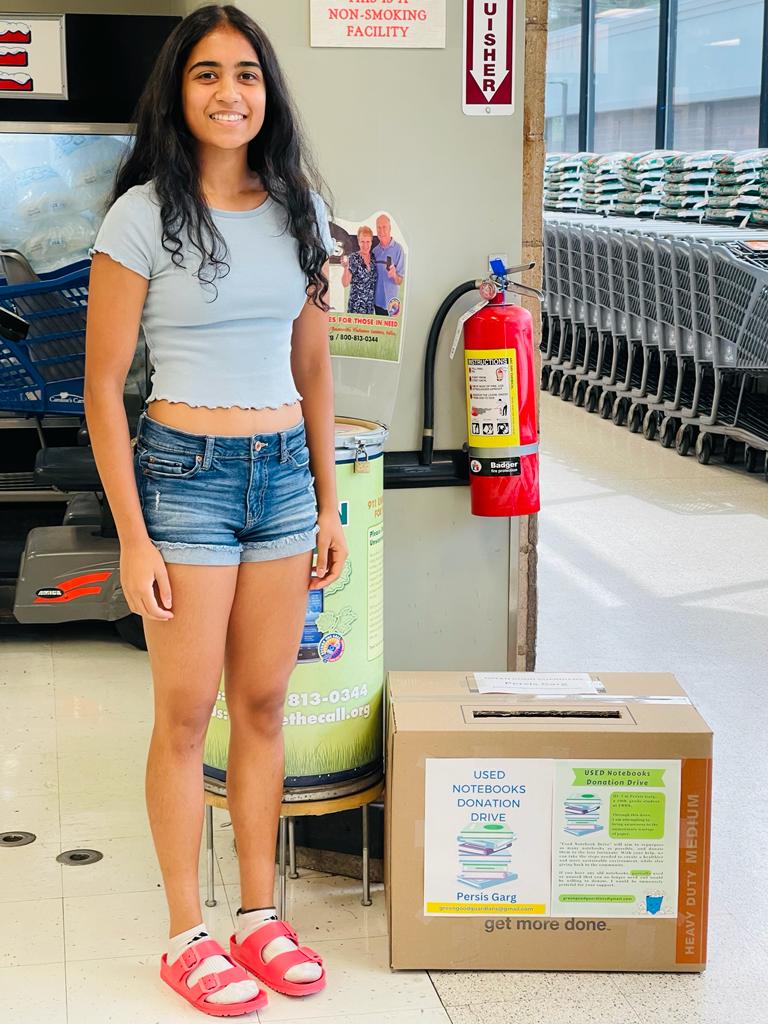
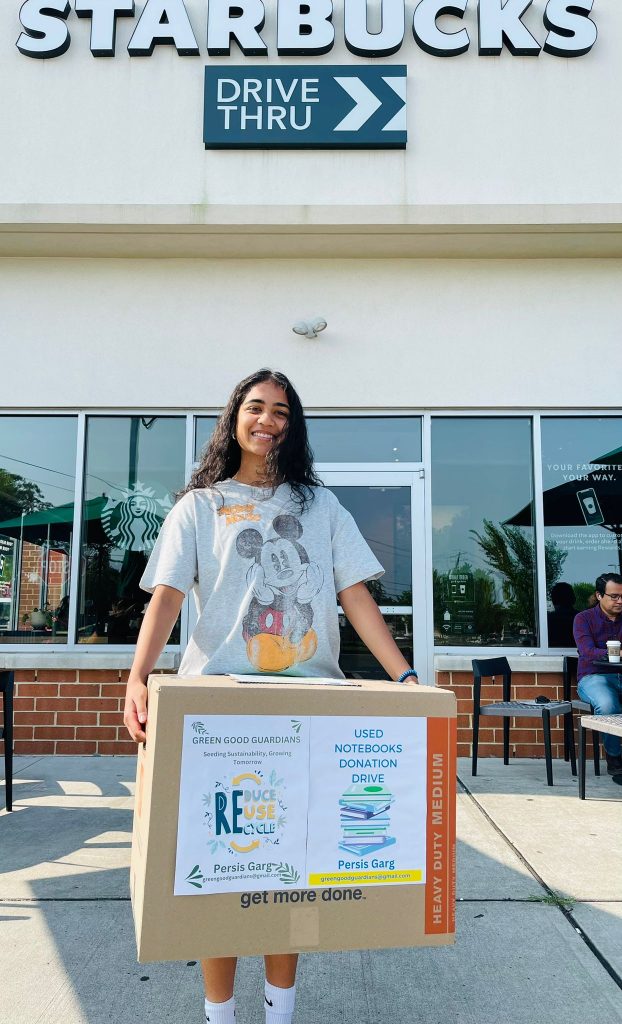
2. Sorting & Rescuing Pages
Once collected, the notebooks embark on their transformation journey. Persis & Ryan gather to sort them by size. With care, they cut out unused pages, preserving precious blank canvases awaiting new tales, calculations, and dreams.
3. Precision & Uniformity
The transformation continues with a focus on accuracy and care. Once the usable pages are separated from scribbled or damaged ones, the rescued papers are then fed into a heavy-duty paper cutter. In swift, precise motions, the machine trims the sheets, ensuring consistency, clean edges, and professional neatness across every notebook.
This step is not just about aesthetics — it’s about creating a sense of equality. Whether a child receives one notebook or five, each one is uniform in size, form, and presentation. No jagged edges, no mismatched pages — just smooth, standardized bundles of potential.
After cutting, the pages are stacked meticulously and bound with fresh covers, often recycled or newly designed by volunteers. Holes are punched uniformly for binders. Every detail — from the margin alignment to the corner folds — is checked with care.

4. Stacking & Assembly
The freshly cut papers are counted and stacked meticulously, 50 pages in each pile, ready to be reborn.
5. Designing a New Identity
While the paper awaits assembly, creative souls — young designers, volunteers, and students — open up Canva and let their imaginations flow. Using colors, illustrations, and meaningful words, they design vibrant, attractive covers that transform each recycled notebook into something joyful and inspiring.
Every design tells a story: a story of resilience — showing how something once discarded can find new purpose; a story of recycling — proving that sustainability can be both beautiful and practical; and a story of a community coming together — where everyone contributes their talent to make a difference.
Some covers feature motivational quotes like “Today is a fresh start” or “Learn. Grow. Give back.” Others highlight playful elements like animals, stars, nature, or geometric patterns. These aren’t generic products — they’re personal statements, each one created with care and intention.
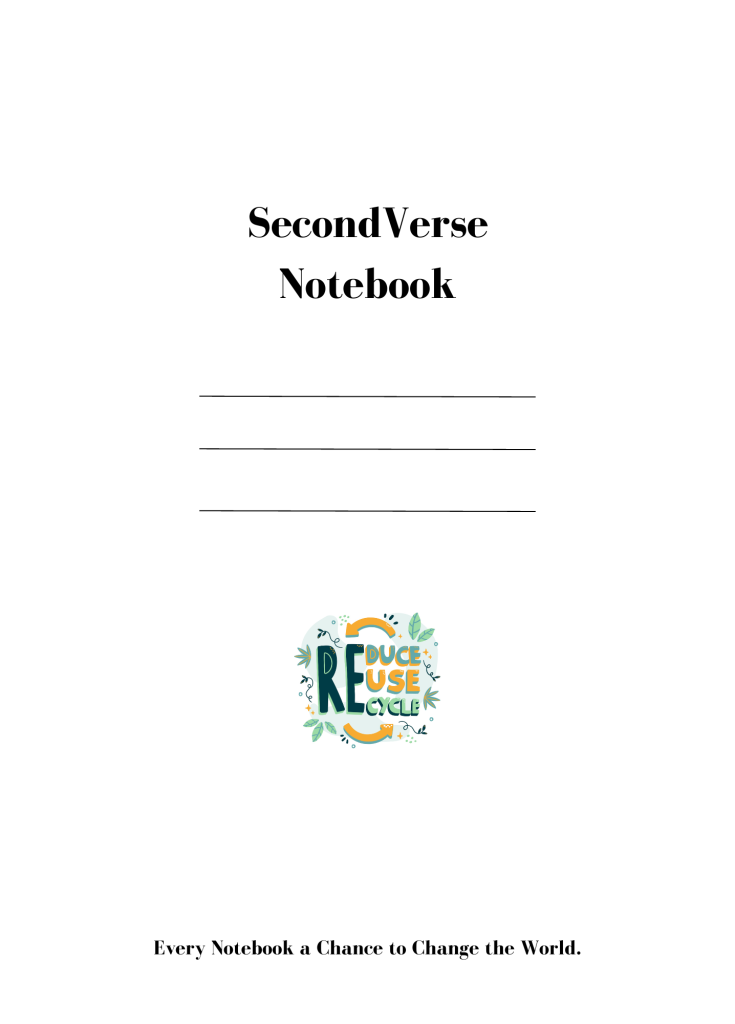
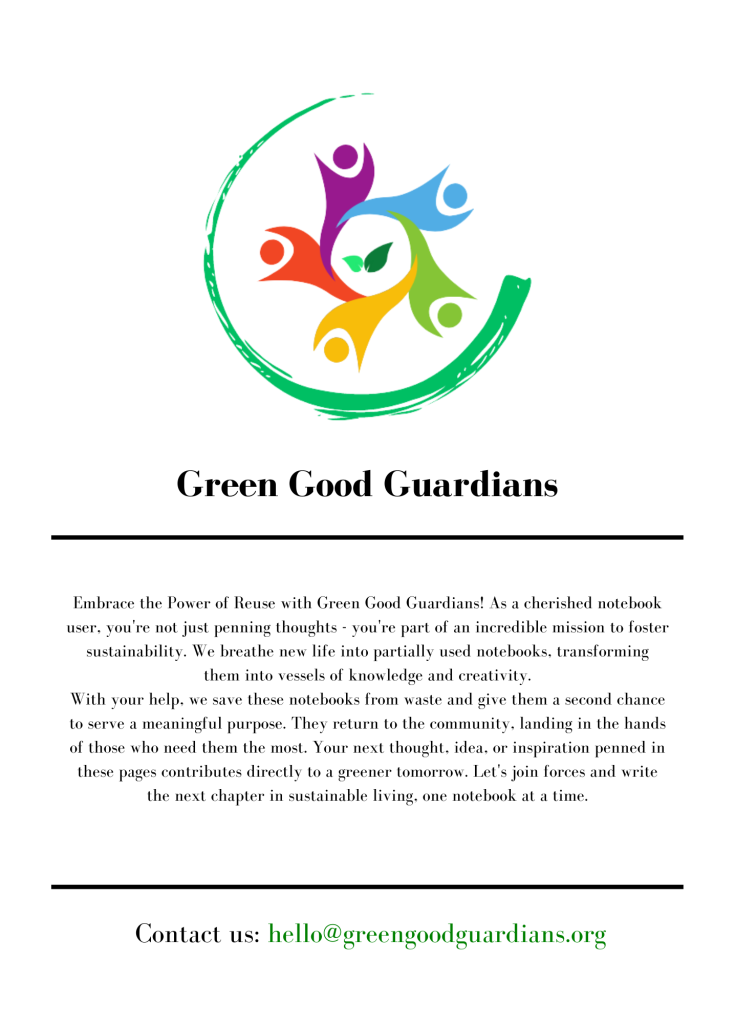
6. Binding & Building
Now comes the final transformation — the moment where scattered pages and creative covers come together to form something complete.
The neatly trimmed stack of papers, flanked by the newly designed covers, is carefully aligned and placed into a heavy-duty hole-punching machine. With a rhythmic clunk-clunk, it punches even, symmetrical holes, ensuring every sheet is perfectly in sync. Precision here matters — it’s what turns a pile of pages into a functional notebook.
Next, the spiral wire is gently threaded through the holes — a delicate but purposeful process. Once secured, the spiral holds everything together in perfect harmony, creating a sturdy, flip-ready notebook that feels brand new.
This isn’t just assembly — it’s construction with care. Every notebook is tested for durability, flipped through, and given a final quality check. What began as scattered scraps and forgotten supplies is now a fully functional, thoughtfully crafted learning tool.
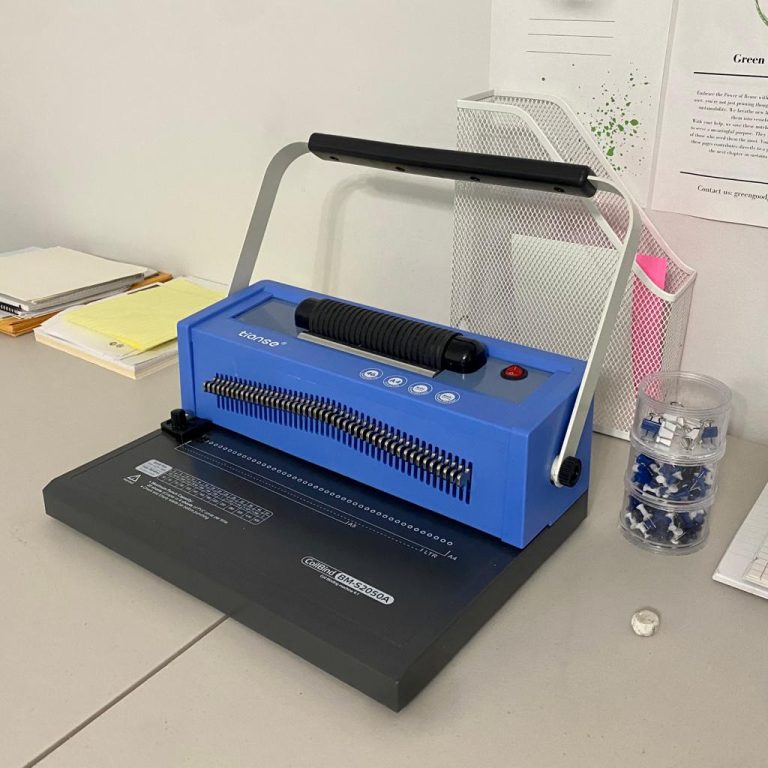

7. Quality & Commitment
Before they head out into the world, each notebook undergoes rigorous quality control. Every page, every binding, and every cover is inspected to ensure that the kids receiving them get the best.
8. Distribution & New Beginnings
With a fresh look and a renewed purpose, each notebook is carefully packaged — stacked with care, wrapped with intention, and prepared for its most meaningful journey yet. These aren’t just supplies anymore; they’re symbols of possibility, ready to land in the hands of children who need them most.
Through schools, community centers, shelters, and partner organizations, the notebooks are distributed to young learners, many of whom have never owned a notebook of their own. What was once tossed aside now becomes a canvas for creativity, a tool for education, and a source of confidence.
But this project is more than just recycling paper — it’s about reviving hope and championing sustainability. It tells the story of a city that believes in second chances — for a forgotten notebook, and for the children who will write their dreams inside it.
